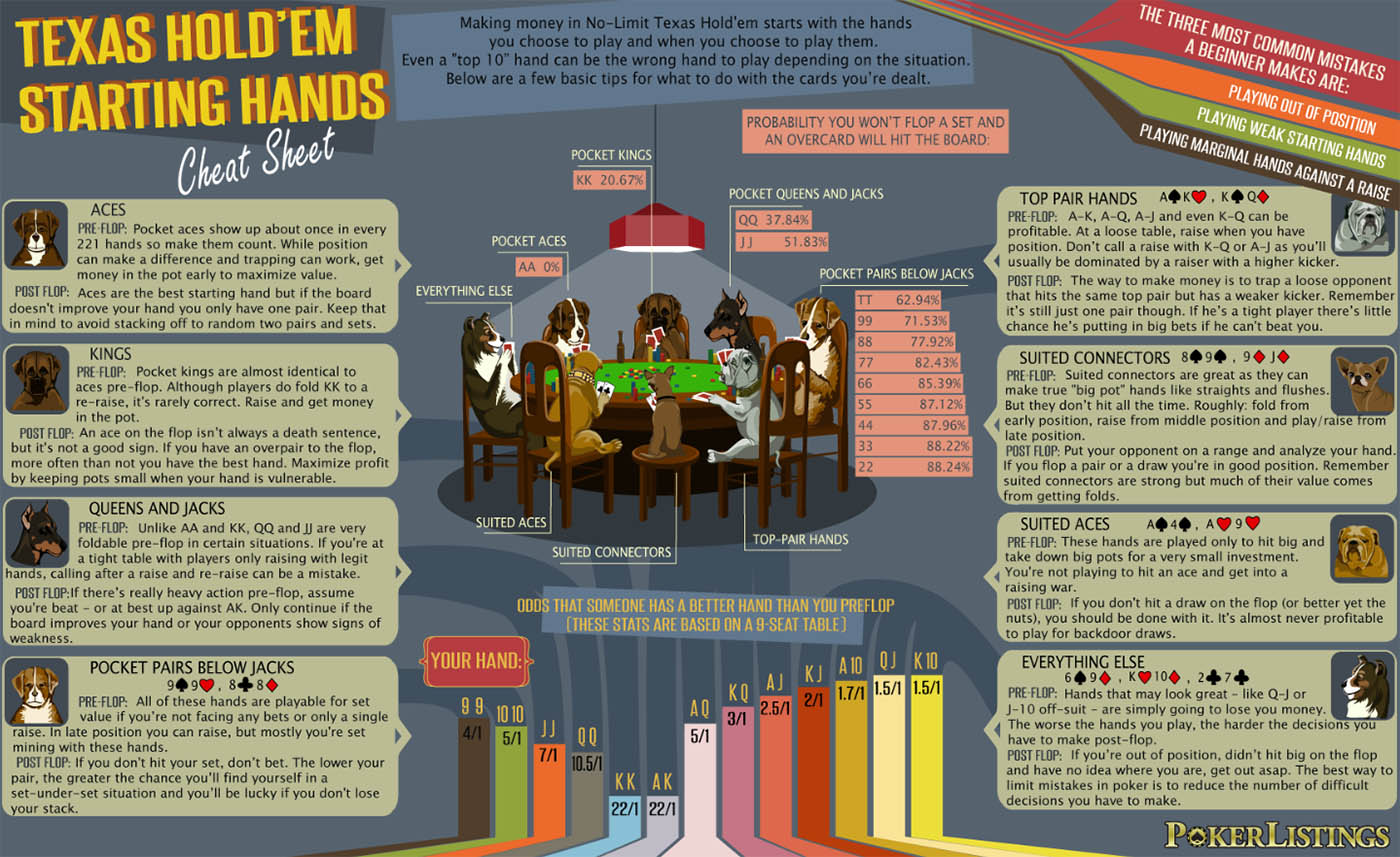It’s hard to pinpoint how many variants of poker there are around the world, and it’s as challenging to think about the history of the game. Some attribute its development to the French game poque while others suggest that the prototype of poker is the ancient Arabian game As-Nas. None of these has been proven. But one thing’s for sure: poker was invented in the States in the early 20th century, although it would take almost 100 years for the game to become what it is today.
Texas Hold ‘em
While Texas Hold ‘em was invented much earlier before it caught on, it wasn’t until the late half of the 20th century that it first took hold in Las Vegas. Texas Hold ‘em was a novelty at the time, as it allowed four bets instead of the two in draw poker, so many believed this variant would catch on.
But it wasn’t until the 70s that the first major tournament — the World Series of Poker (WSOP) — would be conceived, featuring Texas Hold ‘em as the game of choice for the final. Back then, the event included only eight players. By 1982, there were 100, and a decade later, that doubled.
By that time, Texas hold ‘em had become widespread all over the country, and by the late 90s, it received global acclaim thanks to advancements in technology, allowing for televised tournaments and paving the way for online gaming.

Knowing whether to play and when to fold is what separates good players from “meh” ones. [Source: Pokerlistings.com]
Omaha Hold ‘em
Omaha Hold ‘em is another poker variant where all players share the same five community cards. However, this one was only introduced in the 80s as a result of the reinvention of older styles.
While the game is similar to Texas hold ‘em, there are some significant differences. For example, in Omaha Hold ‘em, each player receives four hole cards instead of two. Another difference is that in the Omaha variant, all subsequent bets are equal, and each player must make a hand from two holes and three community cards. Such allows for more possible combinations, which necessitate a strong strategy.
Invented in the 80s, today, Omaha Hold ‘em is the second most popular poker style after it’s Texas counterpart. So, now that we saw that the late 20th century gave another big thing to poker, let’s consider how the last three decades of the 20th century influenced the poker variant of Razz.

In games such as Razz, the ace is considered the lowest card. [Source: Pexels.com]
Razz
Razz is a form of stud poker, which means that players receive hole cards, some of which are visible to all other players. The game of Razz is played as lowball poker — in other words, a player must make the lowest five-card combination from seven hole cards. As in most poker games, the ace is the lowest card one can get. And while Razz was developed on the basis of the now ancient Seven-card stud, the variant only appeared at the WSOP in 1971.
The Razz variant is the supporting hero of an exciting poker happening from the 90s. In 1992, the Greece-born Archie Karas went on to conquer the world of poker. The trouble was that he only had come with $50. Some Razz games later, Karas turned that $50 into $30,000, which he then multiplied to $7,000,000. Later, he filled his bank account with $50 million, only to lose it all to dices and baccarat.
Seven-Card Stud
Seven-card stud poker can safely be called the father of the game. Before Texas Hold ‘em took over players and tournaments, it was the seven-card stud that was the go-to poker variant.
The rules are slightly less straightforward than in other poker styles and the action plays out in several rounds. In the beginning, each player receives three hole cards — two facedown and one faceup. The player with the lowest faceup card pays a bring-in (a form of ante), and after that, the betting begins. Subsequently, four faceup and one facedown cards are dealt, with betting in between the dealings.
The widespread popularity of seven-card stud lived for decades until the late 20th century when Texas Hold ‘em took over as the king of poker and let the seven-card step down from the throne.
Seven-Card Stud Hi-Lo Split-Eight or Better
As the name suggests, this one is a mixture of a seven-card stud and split-eight or better. Players receive seven cards, and the plot is split between the player with the highest and the one holding the lowest hand.
It is an intricate game where one can hope for getting the best or the worst hand and still come out a winner. On top of that, players can choose a different combination for making a high or low hand, thus making things more complicated but also getting a higher chance for a win.
This poker variant is among the least popular but also among the most exciting ones. Its history is not clear, though it is based upon the seven-card stud mentioned above. Thus, it’s safe to assume that this one, too, faded away sometime in the better half of the last century.
The five poker variants mentioned here are sometimes played in rotation in what’s known as H.O.R.S.E. (a letter for each style). These are also the most common poker styles, and each one of them began or ended its glory days sometime between the 70s and the 90s. Still, all these games are found all over the globe, and they serve as a reminder of how dynamic and intriguing the game of poker is.
[Banner image source: Pexels.com]

A History of the WSOP | Has it leaked?
Apr 25, 2022 -
[…] tournaments held in casinos around the world are now the norm and amateur and professional poker players can participate in the World Series of Poker Main Event regardless of their geographical […]